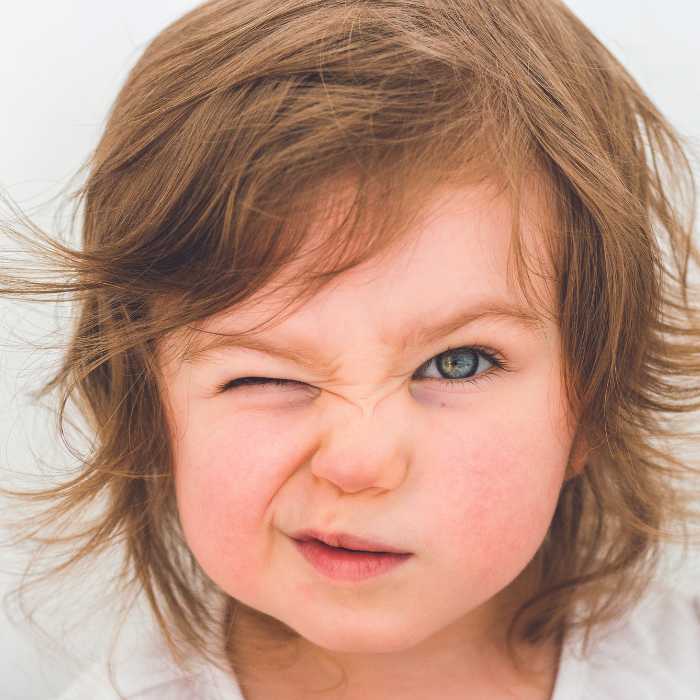
It’s that time of year yet again, when hay fever makes us into sneezing, watery-eyed grumpypants. Tiffany Brown talks seasonal allergies.
Allergic reactions can occur when our immune system thinks a substance is harmful and reacts by producing a range of symptoms. These commonly include sneezing, watery and/or swollen eyes, stuffy or runny nose, itching, a rash or hives, stomach cramps, or diarrhoea. With the arrival of spring, allergy symptoms often appear or if already present, worsen.
Hay fever and going to school
Sending your child to school with a runny nose, watery eyes, or while they’re sneezing isn’t ideal. But hay fever isn’t “catching”, and shouldn’t hinder your child’s participation in normal school activities (although athletics days and outdoor play can be difficult if symptoms aren’t under control). If your child is suffering from hay fever, it’s important to see your GP to find out if there are any safe and suitable treatments they can take which will help to treat their symptoms. Also, talk to your child’s school and find out what their policies are around children who have hay fever symptoms. Perhaps they can carry their own small box of tissues and hand sanitiser around with them to use if necessary. If your child is having a particularly bad day and the symptoms are obvious, make sure your child’s school knows it’s hay fever and not something more.
Seasonal allergies/hay fever
Thought to be a consequence of a rise in pollen from wind- pollinated plants such as trees, grasses, and weeds, the term hay fever was coined because the symptoms common to allergic rhinitis (hay fever’s official name) often proliferate in summer’s hay-cutting season. So allergic reactions presenting at this time of year are often referred to as seasonal allergies. The common symptoms of hay fever include sneezing, stuffy or runny nose, watery and itchy eyes, itchy sinuses, throat or ear canals, ear congestion, and postnasal drainage, while less common symptoms include headache, shortness of breath, wheezing, and coughing.
All about histamine
So what actually happens to us when a reaction occurs?
In response to the signal to protect against invasion, special cells called mast cells release histamine and other chemicals into the bloodstream. Histamine is a chemical messenger involved in immunity, digestion, and as a neurotransmitter for the brain and nervous system. The release is designed
as a protective measure to increase blood supply and create low-grade inflammation. But in chronic cases, histamine release gets out of hand, producing some of the symptoms of discomfort listed above. Because the symptoms vary in type, consistency, frequency, and duration, it can be difficult to diagnose histamine intolerance and more difficult still to determine its exact cause.
Dao in short supply
When histamine is released, the body should make an enzyme called diamine oxidase, or DAO, to help break down the histamine. Sometimes, however, DAO doesn’t work well in the body. Histamine is responsible for stimulating stomach acids to manage internal bacteria and help digestion. It also has a role in the nervous system, where a balance is required to help control pain, happiness, appetite, mood, memory, blood pressure, motivation, and the sleep/wake cycle. Foods that are high in histamine or cause histamine release in the body include fermented foods, shellfish, processed or smoked meats, dried fruits, tropical and citrus fruits, avocados, tomatoes, bananas, chocolate, walnuts, cashews, peanuts, food dye, and spinach.
About immunotherapy
Immunotherapy, also known as desensitisation, involves the administration of a series of injections that may be able to desensitise your child to certain allergens. Increasing amounts of the allergen responsible for the reaction are administered over time, to trigger the body’s ability to deal with the invader. This therapy may take months or years to be effective, and may also be administered as a tablet dissolved under the tongue, known as sublingual immunotherapy.
Common causes of hay fever
- Pollen
- Dust mites
- Pet hair/animal dander
- Mould
- Certain foods
- Hay fever is commonly aggravated by tobacco use/smoking, perfume and air pollution
Natural treatments
- Avoid the allergen(s)
- Local honey
- Vitamin C
- Tumeric
- Quercetin
- Omega-3 fatty acids
- Vitamin A and Zinc
Medical treatments
- Antihistamines
- Nasal sprays
- Eye drops
- Immunotherapy
Is it hay fever or a cold?
| Complaint | Hay fever | Cold |
| Runny, blocked, stuffy nose | Muccous tends to be thinner and clearer | Muccous is usually thick, often discoloured (yellow/green) |
| Itchy eyes | Almost always | Almost never |
| Fever | Not usually, unless symptoms have run on into a sinus infection | More commonly |
| Dark circles under eyes | Can be an indicator of hay fever | Not associated with a cold, other than in the case of extreme tiredness |
| Nose bleeds | Can be an indicator of hay fever | Not usually associated with a cold |
More on health from Tots to Teens:
You Guide to Nits, School Sores and Scabies








